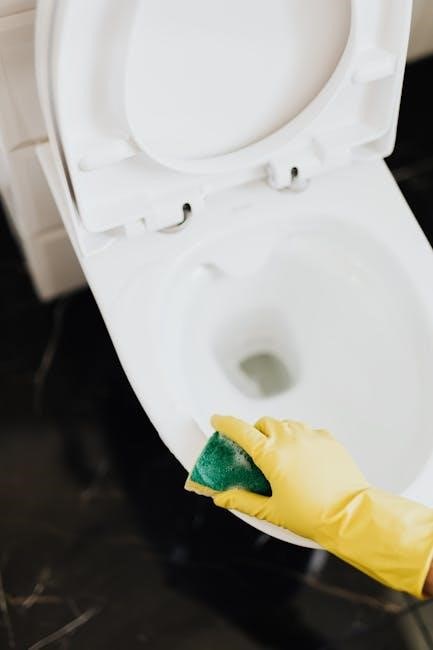Manual Reader Crossword: A Comprehensive Guide
Embark on a journey into the captivating world of crossword puzzles! This guide provides a comprehensive overview for enthusiasts of all levels․ From basic principles to advanced solving techniques, we explore strategies, resources, and the cognitive benefits that enhance puzzle-solving skills․
Understanding the Basics of Crossword Puzzles
Crossword puzzles, a delightful blend of vocabulary and logic, have captivated solvers since 1942․ At their core, they are grids of white and black squares, where the goal is to fill the white spaces with letters forming words or phrases․ These entries are derived from clues, which can range from straightforward definitions to cryptic hints․ The puzzle’s structure is interconnected, with across and down entries sharing letters, creating a challenging yet rewarding experience․
Understanding the numbering system is crucial; each numbered square indicates the start of an entry․ Clues are listed accordingly, either as “Across” or “Down․” The number of squares corresponds to the number of letters in the answer․ Solving requires attention to detail, as incorrect entries can obstruct progress elsewhere in the grid․
Crosswords test knowledge, vocabulary, and lateral thinking․ They encourage solvers to explore synonyms, antonyms, and wordplay․ Mastering the basics involves recognizing common clue types and familiarizing oneself with grid patterns․ Whether a casual pastime or a competitive pursuit, crosswords offer intellectual stimulation and endless hours of entertainment․
Decoding Crossword Clues: A Beginner’s Guide
Embarking on the crossword journey can seem daunting, but understanding clues is the key․ Clues come in various forms, from simple definitions to clever wordplay․ A common type is the direct definition, where the clue provides a straightforward synonym or explanation of the answer․ For instance, “Happy” might lead to “Glad․” However, clues can also be indirect, employing metaphors, analogies, or puns․
Pay attention to the length of the answer, indicated by the number of squares․ This constraint helps narrow down possibilities․ Consider the tense and number of the clue; if the clue is plural, the answer likely will be too․ Look for hidden hints within the clue itself․ Some clues contain anagrams, where the letters of a word are rearranged to form the answer․ Others might embed a word within a longer phrase․
Context is also vital․ Consider the theme of the crossword, if any, as this can provide valuable clues․ Don’t be afraid to use external resources like dictionaries and online solvers․ With practice and patience, decoding crossword clues becomes second nature, unlocking the satisfaction of completing the puzzle․
Common Types of Crossword Clues: Fill-in-the-Blanks
Among the varied landscape of crossword clues, fill-in-the-blank clues stand out as a beginner-friendly entry point․ These clues present a phrase or sentence with one or more missing words, inviting the solver to complete the thought․ Often, these are the easiest clues to identify and solve, providing a foothold in the puzzle․ Experienced solvers frequently tackle these first, gaining momentum and revealing intersecting letters that aid in solving more challenging clues․
The structure of fill-in-the-blank clues provides valuable hints․ Grammatical context and common phrases act as guides․ Consider the surrounding words, the part of speech required, and typical collocations․ For example, a clue like “___ and void” strongly suggests “Null” as the answer․ Look for common expressions or idioms that fit the blank spaces․
While seemingly simple, fill-in-the-blank clues can sometimes incorporate wordplay․ Be attentive to double meanings or subtle twists․ Even with their straightforward nature, they offer a gratifying sense of accomplishment and contribute to the overall solving process․ Fill-in-the-blanks are a cornerstone of crossword puzzles, providing accessibility and strategic advantage․
Advanced Techniques: Breaking Down Complex Clues
As crossword puzzles increase in difficulty, solvers must employ advanced techniques to decipher intricate clues․ One such technique is breaking down longer clues into smaller, more manageable parts․ This involves identifying key words, phrases, or potential definitions within the clue․ Look for synonyms, antonyms, or words hidden within words․ Dissecting the clue’s structure can reveal hidden meanings or alternative interpretations․
Another valuable approach is to consider the clue from multiple angles․ What is the literal meaning? Is there a figurative or metaphorical interpretation? Explore different possibilities before settling on a single answer․ Pay close attention to punctuation, as it can provide crucial hints about the clue’s structure or wordplay․
Furthermore, be mindful of the clue’s tense and number․ These grammatical cues often mirror the answer’s tense and number․ If a clue is plural, the answer is likely plural as well․ Similarly, past tense clues usually indicate past tense answers․ Mastering these advanced techniques empowers solvers to tackle even the most challenging crossword puzzles with confidence and precision․
Utilizing Resources: Dictionaries and Solver’s Blogs
In the pursuit of crossword mastery, leveraging external resources is indispensable․ Dictionaries are a solver’s best friend, serving as invaluable tools for verifying potential answers and uncovering hidden meanings․ When faced with an ambiguous clue, consult a dictionary to explore various definitions, synonyms, and related terms․ Pay attention to etymology and word origins, as they can offer insights into the puzzle’s wordplay․
Beyond dictionaries, solver’s blogs and online forums provide a wealth of knowledge and experience․ These communities offer insights into common crossword conventions, clue types, and solving strategies․ Explore blogs to learn about cryptic clues, anagrams, and other advanced techniques․ Engage with fellow solvers, ask questions, and share your own insights․ Many blogs offer hints and solutions for specific puzzles, providing valuable assistance when you’re stuck․ Remember, the first thing to know about cryptic crosswords is that there’s no such thing as cheating!

By combining the power of dictionaries with the collective wisdom of solver’s blogs, you’ll significantly enhance your crossword-solving abilities․
The Art of Cryptic Crosswords: A Deeper Dive
Cryptic crosswords present a unique and intellectually stimulating challenge, demanding a different approach than standard puzzles․ They are characterized by clues that employ wordplay, hidden meanings, and unconventional structures․ Mastering these puzzles requires a shift in perspective, embracing ambiguity and embracing the art of decoding․ The first thing to know about cryptic crosswords is that there’s no such thing as cheating․ Use the dictionary․ Look up a solver’s blog․ Phone a friend․ It’s encouraged!
One key element is recognizing anagram clues, where the letters of a word are rearranged to form the answer․ Look for anagram indicators like “mixed,” “broken,” or “arranged․” Another common technique involves identifying hidden answers within the clue itself․ These hidden words can run forward or backward, often disguised by other words․
Double definitions are also prevalent, where the clue offers two distinct meanings that both point to the same answer․ Keep an eye out for clues that seem to have two separate parts, each suggesting a possible solution․ Cracking cryptic crosswords is an exercise in lateral thinking, requiring patience, creativity, and a willingness to embrace the unexpected․

Strategies for Efficient Solving: Starting with Across Clues
When tackling a crossword puzzle, a strategic approach can significantly improve your solving speed and accuracy․ A common and effective strategy is to begin with the across clues․ These clues often provide a foundation of letters that intersect with the down clues, offering valuable starting points; Once you get one, look at the down clues that it crossed with․
Start by identifying and solving the easiest across clues first․ Experienced solvers know that fill-in-the-blank clues are typically among the easiest to solve․ These are the clues that contain words like “___” or “blank,” where you simply need to complete the phrase or sentence․ Additionally, focus on shorter words, as they generally have fewer possibilities and are easier to deduce․
As you fill in the across answers, pay close attention to the intersecting letters with the down clues․ These intersections can provide crucial hints and help you narrow down the possibilities for the down answers․ Furthermore, make sure to check the tense and number in the clues․ If a clue is plural, you can assume that the answer will be too․ This iterative process of solving across clues and utilizing the intersections to solve down clues can create a momentum that leads to faster and more efficient solving․
The Benefits of Crossword Puzzles: Cognitive Skills
Engaging with crossword puzzles offers a multitude of cognitive benefits that extend beyond mere entertainment․ Regular crossword solving can significantly enhance vocabulary skills, as you encounter new words and reinforce your understanding of existing ones․ The process of deciphering clues and finding the correct words strengthens your problem-solving abilities, requiring you to think critically and creatively․
Crosswords also improve memory function․ Recalling words, definitions, and associations related to the clues exercises your memory and helps to keep your mind sharp․ Furthermore, solving crosswords enhances concentration and focus․ The need to pay close attention to the clues and the grid helps you to block out distractions and improve your ability to concentrate on the task at hand․

Beyond these specific cognitive benefits, crossword puzzles can also reduce stress and promote relaxation․ The act of engaging in a mentally stimulating activity can provide a welcome distraction from daily worries and help to calm your mind․ Moreover, the feeling of accomplishment that comes with completing a crossword puzzle can boost your confidence and self-esteem․ So, pick up a crossword and enjoy a fun and brain-boosting activity!
Tips and Tricks for Beginners: A Short Guide
Starting your crossword journey can be exciting! Begin by tackling fill-in-the-blank clues, as these are typically the easiest to solve and can provide a quick start․ Look for clues with only a few letters; these often have limited possibilities․ Pay attention to the tense and number of the clues, as the answer must match grammatically․

Don’t be afraid to use resources․ Dictionaries and solver’s blogs can be invaluable tools․ Remember, it’s not cheating! Experienced solvers often leverage these resources․ Focus on completing three- and four-letter words first, as they can unlock other parts of the puzzle․ When stuck, try breaking down longer clues into smaller parts, searching for words within words, synonyms, or antonyms․
Start with across clues․ As you solve one, look at the down clues it intersects with․ This can provide additional hints․ If a clue is plural, assume the answer is too․ Most importantly, be patient and persistent․ Crossword solving is a skill that improves with practice․ With these tips, you’ll be well on your way to completing your first crossword in no time!
Notable Crossword Solvers: Learning from the Best
To truly master crossword puzzles, it’s beneficial to study the techniques of renowned solvers․ One such example is Dan Feyer, a nine-time winner of the American Crossword Puzzle Tournament․ Observing how these experts approach a grid offers invaluable insights․ They often display a mastery of vocabulary, pattern recognition, and logical deduction․
Studying their strategies involves analyzing how they dissect complex clues and their speed in identifying common crossword answers․ Many top solvers emphasize the importance of understanding clue conventions and utilizing all available resources․ They often start with easier clues, such as fill-in-the-blanks, to gain a foothold in the puzzle․
Furthermore, notable solvers stress the value of practice and persistence․ They often analyze past puzzles to identify recurring patterns and tricky wordplay․ By studying their approach, aspiring solvers can learn to improve their speed, accuracy, and overall problem-solving skills․ Learning from the best provides a clear path to improvement and a deeper appreciation for the art of crossword solving․
